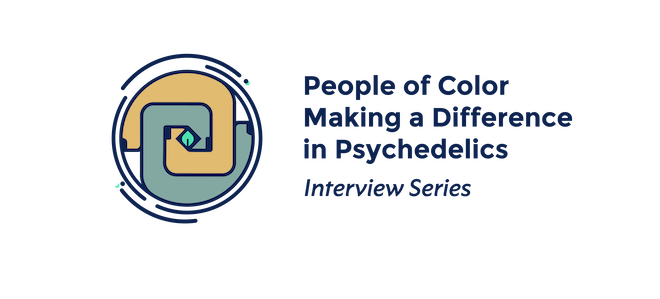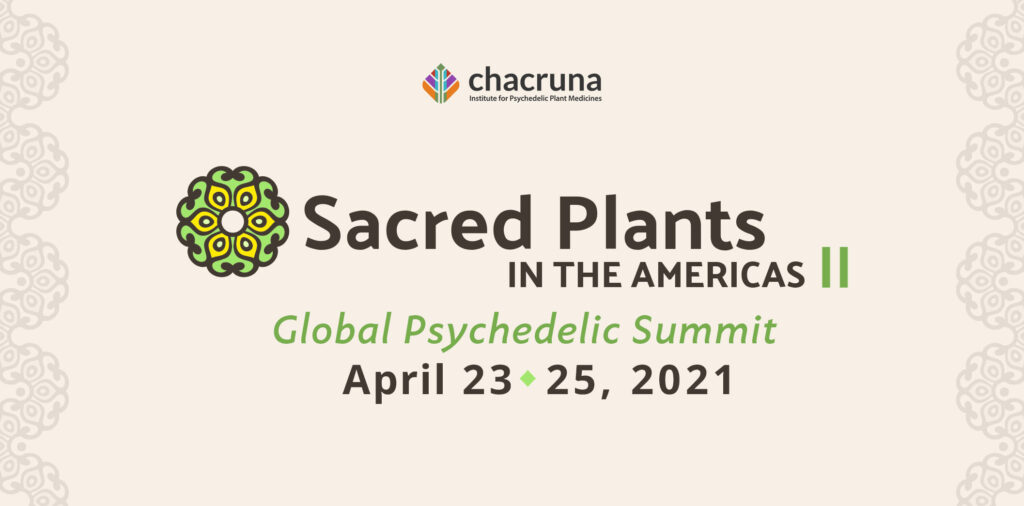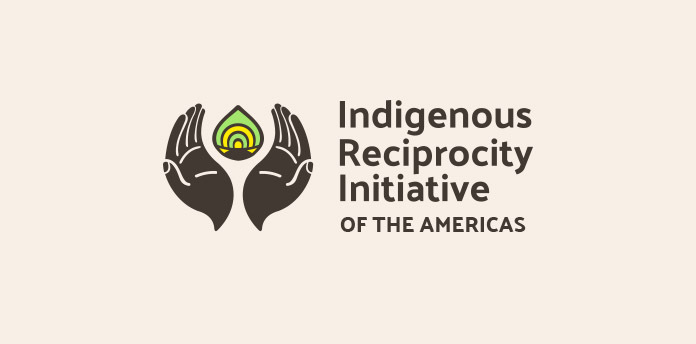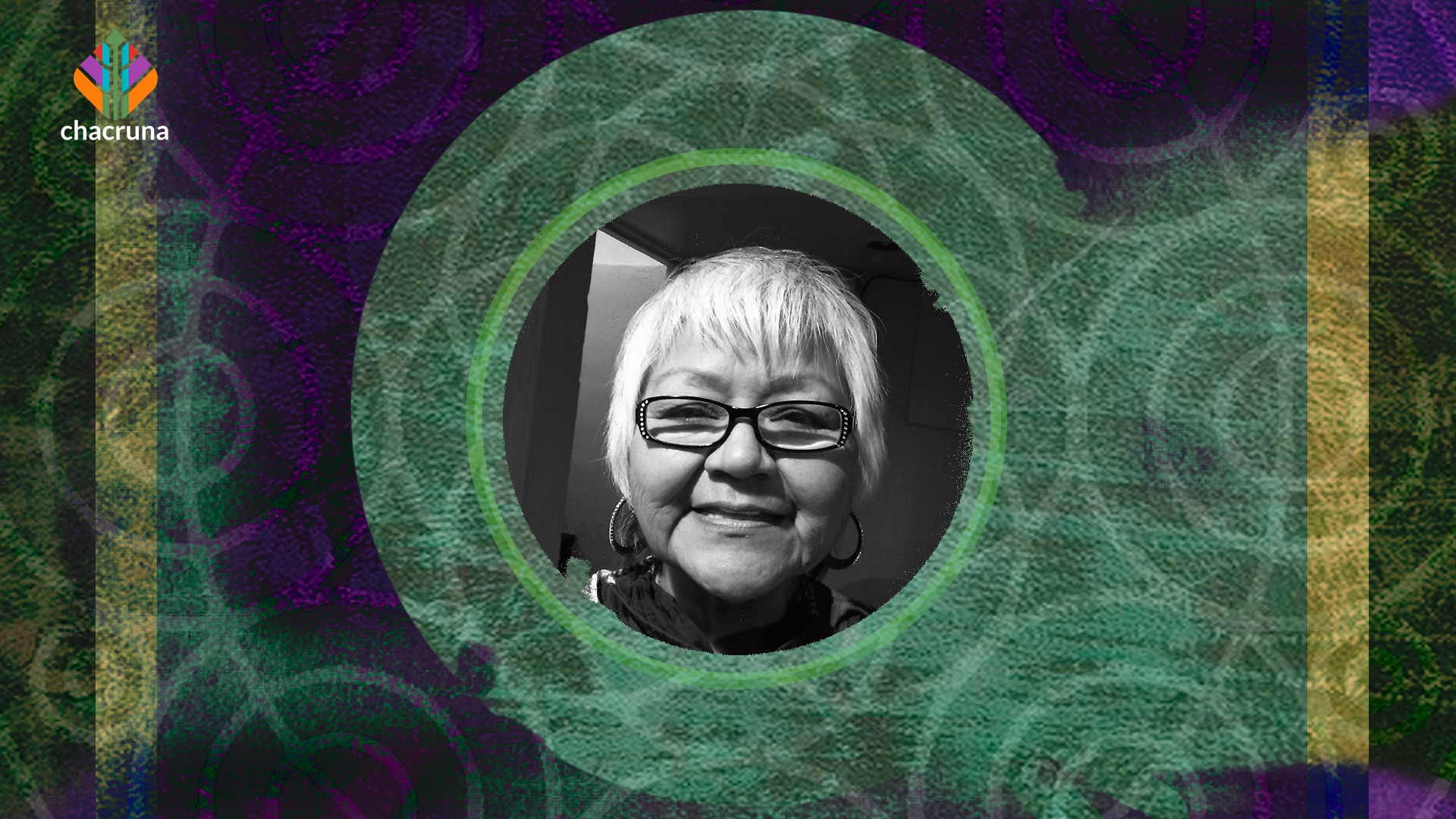
Debi Roan’s mother told her she was born with a peyote button stuck to her cheek. Throughout her life, her parents have facilitated peyote ceremonies, honoring and cherishing their sacred medicine through sacred Navajo rituals. When she recently learned about the “psychedelic renaissance,” Debi felt drawn to learn more about how psychedelics like psilocybin mushrooms are helping people heal. She has since completed the Salt Lake Psychedelic Therapy Training Program, and she looks forward to finding ways to educate others, as well as to respectfully bridge the Western mainstream with the Navajo traditions that have long held plant medicine as sacred.
In this interview, Debi explains in vivid detail the peyote ceremonies that have been fundamental to her family, offering a broader understanding of the sacredness of the rituals. From her perspective, a peyote ritual is not only sacred itself, but is also a process through which the inherent sacredness of all life is honored and revealed.
Sean Lawlor: You grew up in two worlds: one was a Navajo world, and the other was a very white world, with your parents being police officers.
Debi Roan: Oh yes, pretty much. I’d go into a new school and people would not be so nice because I got dropped off in a police car. I guess we were different. My mom always curled our hair and made us wear dresses. So, we would go into a school that had white, Black and Native Americans in the border towns that we lived in. My mom and I hitchhiked out from New Mexico and started a new life in the city; so, we stayed at my aunt’s place, and I worked at McDonald’s.
We were always moving to a new town. It was really hard, and I grew into a rebel. I’m thankful for that, because everybody always tried to put me in a box like, “You’re gonna be like this or that,” and I was kind of like, “Well, that and some more.” I was really precocious, and because I was the daughter of a police officer, I got to skip jail and do things I wanted to do. I always had this chip on my shoulder, thinking that adults couldn’t push me around.

Join us at Sacred Plants in the Americas II
SL: You told me that your folks facilitated peyote ceremonies?
DR: My grandfather was this old cowboy who had a loud, booming voice. He was the facilitator of the Native American Church that I grew up with, and my mom and dad learned under him, eventually taking over their own church. They facilitated the peyote meetings in ceremony for our family, usually once a year before school started to ask for good year blessings, get through the seasons okay, and learn something that we could use for our lifetime. We grew up having meetings every year. My parents facilitated other family members like cousins and aunts on their own at different times. They would travel miles and miles. Now, they’re older and they just do it just for the family when they need to.
SL: How young were you the first time you sat in ceremony?
DR: My mom says I was born with a peyote button stuck to my cheek. I was probably using it when I was in her womb. Recently, I met a youngster who was surprised that peyote was given to babies. I said, “Well, you get vaccinated and you take aspirin. And, if you’re eating an apple or an orange, those are the same things; they just taste a little bit better than the peyote.”
We were given peyote as a powder, a button, and a tea. It is given about four times throughout the whole night of the ceremony. We take in how much we need of the liquid, and then the button, and then with a small silver spoon we take the powder out of a little crystal glass, put it in our palm, and then take it in. We take water and different sacraments throughout the long night. When you come out in the morning, there is an afterglow.
SL: I’m wondering if you would be willing to share a little more about what these ceremonies look like?
DR: I’d be happy to share that with you. It is usually in a teepee or a hogan, which is eight-sided and has symbolism I really resonate with. You enter the hogan or teepee from the east; all houses are pointed towards the east. My father would lay thin mats around the edge of the hogan, except in front of the door. In the middle is the fireplace. When we’re not using it, we have a little potbelly stove in the middle with a great stack that comes out through the chimney hole on top. Since that’s where the little fire staff comes down, we take out the potbelly stove when in ceremony and put a skirt around the smokestack, which is hung up by wires and appears to be levitating without touching the earth.
The fire chief constantly feeds that fire, so the ash grows. Once the ash gets put forward, a bar of sand is sculpted in a moon shape. That represents your road of life. Right in the middle of the road of life, you have a groove that represents a highway. Right in the middle of that, at the V-point of the fire and on top of the mound of sand altar, you put the grandfather peyote.
The medicine man sits in the doorway. Depending on who the medicine man is, you can have your patient on the right or your patient on the left. Then there’s the male who does the drumming and conducts services, and his wife does a different part of the ceremonies, such as prayers and bringing the water in. We take water as a sacrament, and we do blessings and a special prayer twice, and then a final time with meat, corn, fruit, and water. There is also a dish where you can put money, which goes to the Native American Church.
When you have enough ashes inside the moon in the morning, usually they design it into an eagle. You’re praying to the fire, you’re paying to the ashes, and you’re praying to the altar.
Beyond the altar, you have your sacraments. You have the drum that you’ll be drumming with all night. My dad puts stone on the outside of the drum, puts ash inside the drum, covers the drum with a hide, tightens the laces, and taps on it to get the right resonance. You have a person that is a drummer that goes with the staff, which is a long piece of cedar wood with feathers on it. You also have a rattle with designs on it, so you’re holding the rattle and sage and another little feather. These things are holy, and you put cedar down to bless them when they come in with the fire.
People come in from the east and go clockwise, and they sit down on the wall of the hogan or the teepee, and that is your group of people. Usually, they are invited. Not just anybody shows up to our ceremonies, because it’s family-held and deals with something ongoing with the family theme. My mom will invite particular people that have the skills she thinks we need in that particular lifetime, and they will give their prayers and their blessings and their insights about what needs to go on.
The medicine man starts by telling the patients what is going to happen. Then we pray with rolled mountain tobacco. He starts out with the smoke, and he puts the intention that we are starting this prayer service now
The medicine man starts by telling the patients what is going to happen. Then we pray with rolled mountain tobacco. He starts out with the smoke, and he puts the intention that we are starting this prayer service now, and then he gives the peyote as a juice, as a button, and as a powder. It circles around, and then it comes back and sits in front of the altar. We do that three different times throughout the night, spaced out, and the medicine man rolls tobacco for anybody in the group to pray.
There are rituals. You cannot cross in front of the drum, so if you need to go outside to relieve yourself, you wait one drum turn before you come back. The drum is like the beat of your breath. It never stops, unless the drum or rattle is being passed.
My mom would go out and bring the water in, and the different foods. She would set them in front of her and pray, and we would all take part of the food. Once that is all done, they take apart the drum and pass all of it around, and everybody blesses themselves. Maybe they drink a little bit of what’s inside, or they take the drum sticks and bless themselves with it as a sacrament. When that is done, everybody is allowed to leave, so you follow the drum and the food out and back into the kitchen. After everybody then blesses themselves with the sunlight, they go back in and bless themselves with the cedar, the road, and the altar. They go back all the way around clockwise, and that is the end of the ceremony.
SL: Do people then go home?
DR: Everybody is fed before they go home. They drink coffee, making sure they are safe on their journey home. You take that whole day to recuperate and to rest. My mom says, “Don’t go to sleep until nightfall, so you have all the blessings of the day to go on.”
It’s really tough to sit up all night, listening to the songs and the prayers. You’re thinking about all of these things throughout the night, sitting on your knees on the ground or on a pillow. That’s how I was raised, and that’s how I respect medicine. You put an intention there, and you pray with it.
Those little rituals are part of taking the medicine. It comes with prayers. It comes with songs. It comes with teachings. It’s a mindset that you prepare for when you go in.
You take four breaths of tobacco, and you pray with that. You put the water on your hands, and you bless yourself, and then you can pour a little bit on the earth to give back. Those little rituals are part of taking the medicine. It comes with prayers. It comes with songs. It comes with teachings. It’s a mindset that you prepare for when you go in.
Then, you come out with blessings and think about all the things that happened when you’re going through your trials and tribulations. If you need prayer, you go back to the peyote and ask for the assistance you need. It doesn’t have to be a whole ceremony. It could just be sitting in front of your fireplace and preparing cedar. That’s how I teach people in my own life, when they have a situation and come into my residence. I’ll put cedar down and grab a feather or get a cup of water and do a smudging for them to give what’s on their chest to the spirits to handle.
That’s how the peyote ceremony goes. Was that vivid enough?

Discover Indigenous Reciprocity Iniciative of the Americas
SL: Yes, that was very detailed. Thank you. Do you now facilitate ceremonies?
DR: No. With the Peyote Way Church, you have to be ordained. I do the smudging.
One of our traditions is that we carry our own fireplace as mothers. We have our kitchen, and we have our cedar. We are the caretakers of the fireplace, the prayers, and all the ceremonies.
One of our traditions is that we carry our own fireplace as mothers. We have our kitchen, and we have our cedar. We are the caretakers of the fireplace, the prayers, and all the ceremonies. The Navajo are matriarchal, so everything belongs on the mom’s side. You identify with your mother’s clan, so anybody of your clan is your family. As you get older, you are the matriarch of your family, so you’re taught to pray for everybody before you and after you. So, being considered a shaman or a reverend is just a title that you have already had.
At noon, you pray for thankfulness for food. In evening, you could ask for blessings for your whole family, whatever they might be dealing with. The ceremony is a constant thing that you’re always doing.
I carry cedar and sage with me. You can use any of those elements as your ceremony. It’s just who you are, what you say in respect to all of the elements around you, and you share it with others. That is the ceremony and the blessing. It’s not just something that happens on Sunday. It’s all the time. When you wake up in the morning, you pray to the morning. At noon, you pray for thankfulness for food. In evening, you could ask for blessings for your whole family, whatever they might be dealing with. The ceremony is a constant thing that you’re always doing.
You’re careful of what you say and what you do, because that’s all in the prayer of the day. When people want to come into that space and they’re requesting something special, we will honor that. But if they want to go into a peyote ceremony, then we would ask the elders. With the COVID, I don’t think there is a lot of that going around. Since the elders are the last line of teachings in the world, we need to keep them safe.
SL: What is the work you intend to do with psychedelics?
DR: It is related to what the peyote has done for the Native Americans and to respect it in that way. To be a voice for the plant. Reading some of Chacruna’s interviews with Natives that carry the mushroom, it was held with secrecy. Only one person or a particular family was in ceremony, very much like the peyote. They never gave their okay to use it for scientific purposes or to have neoshamanism take it over. There is a question of appropriation, colonization, and respect, and I want to treat these things not only with respect, but to consider harm reduction, pick up many skills, and have a code of ethics. And then, to carry that forward with respect and with some kind of sharing with other Native tribes to try just to keep that out there.
These things have been appropriated to the neoshamanism level, which kind of just puts a gloss over something genuine. Like, is this Indian made, or is it made in China? Is this Native American, or neoshamanism?
If we represent who we are, then, I think that people, going forward, will know what the difference is. Then, if they want to pick up the traditions, they will know they need to sit down with a traditional elder and receive instruction about how to carry the fireplace and to learn the history of the Native Americans that are still fighting for their sovereignty.
I understand peyote is something that needs to stay away from the umbrella of legalization and decriminalization, because it is sacred, according to the Native American people. There is only so much peyote left in the garden, and there needs to be a way to sustain that to grow it. So many people are going over there who don’t respect the ceremony or the plant for its sacredness and what it represents. The same thing goes for creating mushrooms from a pill. There is so much in the mushroom that is being left out, and you’re only taking a substance that you need for the psychedelic effects.
I don’t like that Pharma can just replicate something like that and put a price on it, and then have people that cannot afford it be left out of that mental clarity they need. I am thinking that it is going that direction, so I want to help straighten out that curve, where we can all have something to celebrate at a later time, instead of having everything kind of go away. History is like that: You hybrid something so much that it loses its essence.
SL: From your perspective, what are the biggest issues with this psychedelic renaissance?
DR: I like the fact that everybody is trying to find a new way of being well. I like the fact that this plant is out there for their benefit of seeking some kind of connection with the plant world. We’ve always done that; we’ve always respected that. And if they can respect themselves enough to find that sacred place that they can communicate with plants, then I think that’s what we all need to do.
The connection in your brain speaks for itself. You create new pathways. You create doorways that you can step through. Your imagination becomes bigger. Your capacity for prayer takes on a new dimension. And your connection with nature takes on something that can heal you.
The churches haven’t brought people to that place of peace inside themselves where they can grow. The connection in your brain speaks for itself. You create new pathways. You create doorways that you can step through. Your imagination becomes bigger. Your capacity for prayer takes on a new dimension. And your connection with nature takes on something that can heal you. That’s where the healing is; not closed off with yourself or just in your own little world. When you get out there and you connect on a certain level, then you’re also helping heal other people that are kind of like you.
I think that speaking about how you’ve changed after taking all of these medicines and stuff like that helps. Not necessarily what problems were resolved, but what new changes you’ve gotten to do all of this stuff with. So, I think that’s where we all need to be.
Because I’ve learned different ways of attending churches and what people’s styles are, and what the concept of this holy war is, I feel that, in essence, these plants are allowing themselves to be revealed to us so that we can all work together on a different dimension. You talk about your five senses, and then people that are more evolved say that it’s infinite, that there are so many different realms of vibing with each other, that we can bring each other up. That’s where I’m hoping that this plant medicine will take us, if we let it. That’s what my prayers are and what my mindset is.
Sign up to our Newsletter:
SL: For folks who want to learn more about peyote, where might you recommend they turn?
DR: There are many Native Americans that don’t want to share their traditions or their rituals around the peyote because they think it will be misused. My own parents won’t allow anybody to record anything inside a ceremony. You would probably just have to sit down with somebody who can kind of tell you about it, because I don’t think you’ll ever really see one.
We will see if this breaks that barrier of people not talking. Usually, people will say negative things before they say positive things, and that is kind of okay with me, as far as getting the word out there and being able to discuss the ceremonies. People need to be aware of where it is coming from and why Native Americans don’t want to share their traditions. It has been happening for hundreds of years that we carry this tradition that way, and when we teach it to others, then I hope that is the way they will honor it, too.
Art by Mariom Luna.
Take a minute to browse our stock:
Did you enjoy reading this article?
Please support Chacruna's work by donating to us. We are an independent organization and we offer free education and advocacy for psychedelic plant medicines. We are a team of dedicated volunteers!
Can you help Chacruna advance cultural understanding around these substances?














